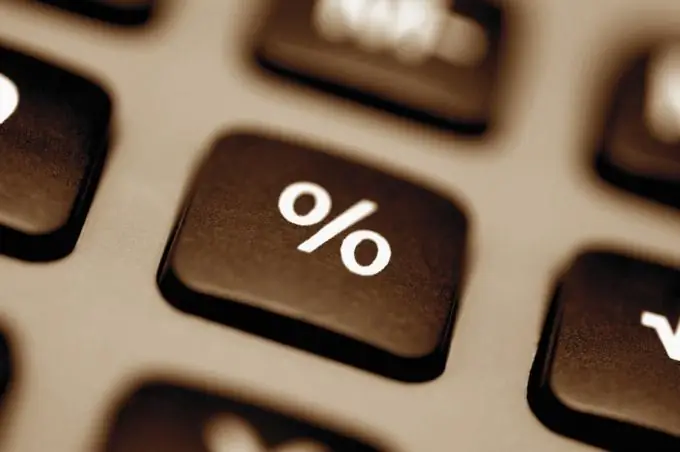- Author Isaiah Gimson [email protected].
- Public 2023-12-17 02:53.
- Last modified 2025-01-24 12:06.
When you need to add a percentage to a number, you can use one of three simple ways. Which method to choose depends on the availability of additional symbols in the calculator.

Adding percentages to a number on a calculator is easy if you know how. You can calculate the required amount in several ways - it all depends on what additional symbols the calculator has. In this case, it does not matter which calculator to use - virtual or real, because the principle of calculation will be the same in any case.
How to add percentages without parentheses and "%"
To do this, the number to which you need to add the percentage should be divided by 100 and multiplied by the desired percentage. Then add the original number - the one to which you need to add the percentage calculated from it. For example, you need to add 5% to 200. For this example, the calculation will be as follows:
- 200÷100×5=10.
- To the resulting number, add the original number to which you need to add a percentage: 10 + 200 = 210.
This means that 200 + 5% will be equal to 210.
Why the number needs to be divided by 100
The number 100 is equal to 100%, and you first need to calculate 1% of the given amount, in order to further multiply this number by the required number of percent for the calculation.
For example, you need to calculate 400 + 15%. To do this, you first need to find out which number corresponds to 1% of 400. So, you need 400: 100 = 4, where 4 is 1% of 400.
Then you need to multiply 4 by 15, the resulting amount as a result of the calculation is 15% of 400, the very number that needs to be added to 400. In this case, it is 60. So 400 + 15% = 460, that is, 400 + 60 = 460.
How to add percentages with parentheses on the calculator
If your calculator has parentheses, you can use them to calculate the amount you need. For example, you need to add 10% to 300. Then the calculation on the calculator will look like this:
300+ (300 ÷ 100 × 10) = 330. Hence, 300 + 10% = 330.
How to add interest if there is a "%" sign on the calculator
Some virtual calculators do not have a% sign even in the advanced version. However, if the calculator has a "%" sign, then calculating the required amount is as easy as shelling pears. For example, you need to 500 + 20%. Then you need to do the following:
- Type "500" on the calculator, then press the addition sign "+".
- Enter the required percentage, in this case - 20, and click on the percent sign - "%". In some cases, after clicking on the percent sign, a finished result appears.
- If the calculation is not completed, then after clicking on the percent sign, the amount of interest is converted to a number equal to the percentage of the specified amount. In this case, the calculation is converted to "500 + 100", where 100 is 20% of 500.
- To get the final result, you just need to click on the equal sign "=". As a result, you can see the required amount - 600.
Hence, 500 + 20% = 600.
Initially, all these calculations can seem confusing and incomprehensible. But after you make the calculation yourself according to the above examples, calculating interest from the required amount will be easier than ever.






